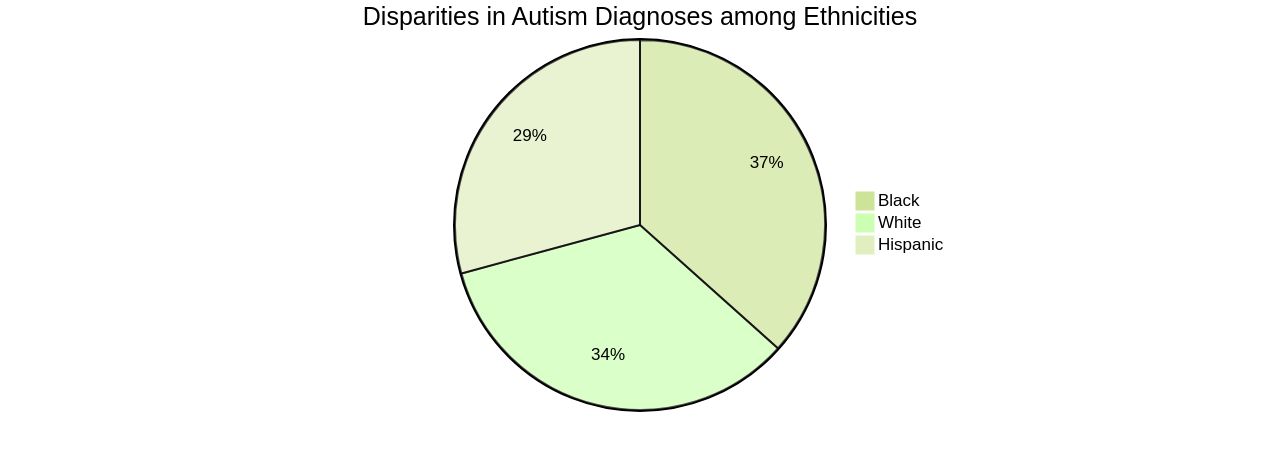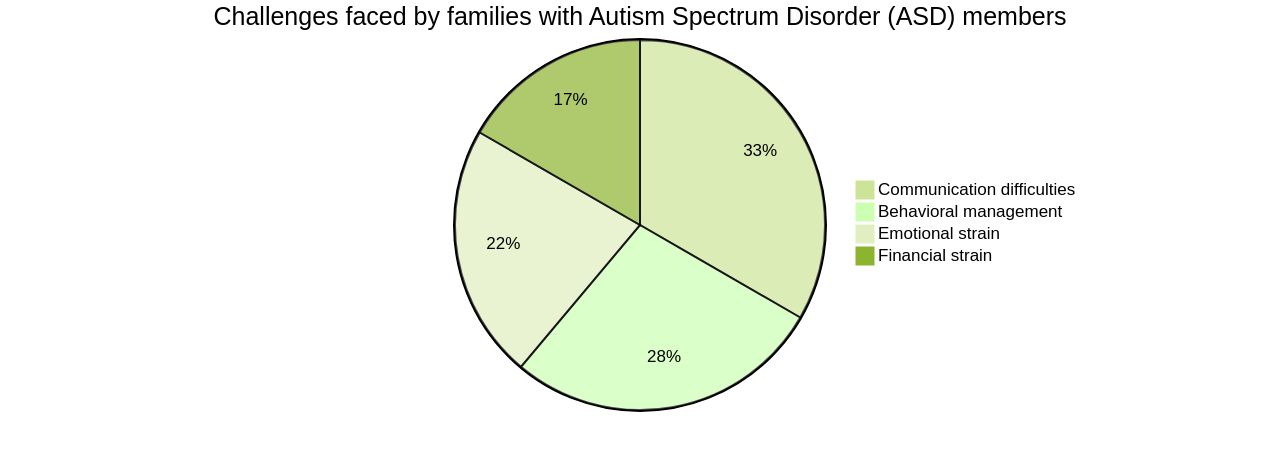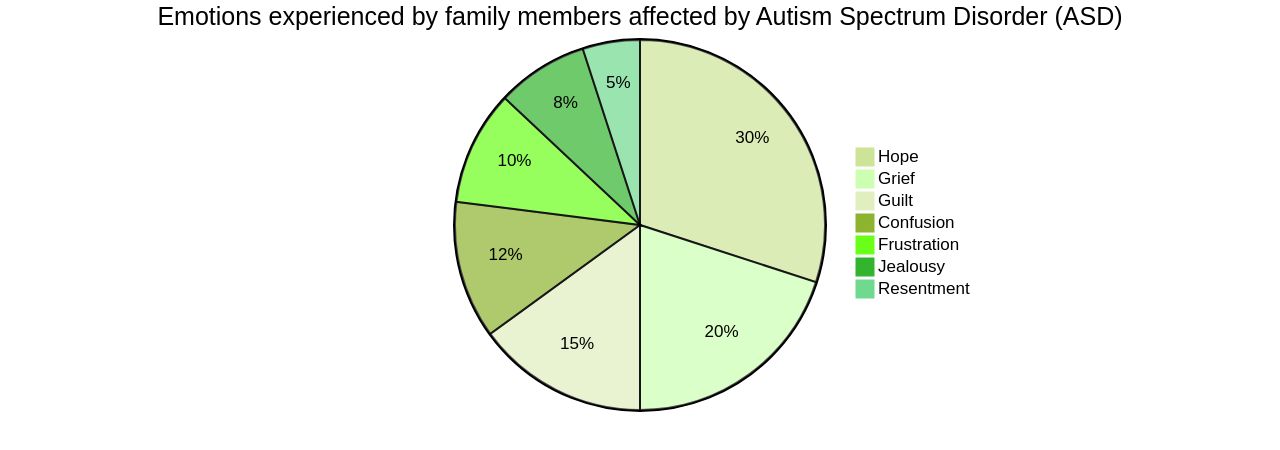Introduction
Autism Spectrum Disorder (ASD) is a complex neurodevelopmental condition that presents unique challenges for families. From navigating the complexities of daily life to managing the emotional impact on family members, the journey of raising a child with ASD requires a comprehensive understanding and support.
In this article, we will explore the different challenges faced by families, the emotional impact on family members, the changes in family dynamics, and the importance of building a supportive network. By providing guidance and resources, we aim to empower parents and advocates to navigate these challenges and ensure the well-being of their children with ASD.
Understanding Autism Spectrum Disorder
Autism Spectrum Disorder (ASD) is a complex neurodevelopmental condition that manifests in diverse ways. It is typified by challenges in social interaction, communication difficulties, and repetitive behaviors, each varying in severity due to its spectrum nature.
ASD's influence on family dynamics is profound, necessitating a comprehensive understanding to foster suitable support mechanisms and cultivate a nurturing environment for individuals with ASD. Recent statistics reveal that children diagnosed with Autism by age 4 are fifty times more likely to receive services.
However, disparities exist within these diagnoses. More White and Black children are identified with Autism than Hispanic children, with previous studies indicating that children of color often receive their diagnoses later than White children.
Several factors such as stigma, non-citizenship or low income, and non-English primary language can act as barriers to early identification of Autism in Hispanic children and children of color. Boys are approximately 4 times more likely to have an Autism diagnosis than girls of the same age, though recent research suggests that girls may present differently and thus, might go undiagnosed.
Contrary to misinformation, Autism is not caused by vaccines, parenting style, or nutrition. It is believed to have a genetic basis, with researchers investigating irregular genetic code segments that people with Autism may have inherited. Some individuals seem to have a susceptibility to Autism, but a single 'trigger' that causes Autism to develop has yet to be identified. In light of growing awareness, the number of Autism diagnoses has seen a significant increase in recent years. The Centers for Disease Control and Prevention (CDC) estimates that 5.4 million people age 18 and older, or about one in 45 people, have ASD. It is also noteworthy that adults with high-functioning autism, especially those with average or higher-than-average intelligence, are often diagnosed later in life.

Challenges Faced by Families
Navigating the complexities of daily life can be particularly challenging for families with a member diagnosed with Autism Spectrum Disorder (ASD). The unique obstacles they face can significantly shape their family dynamics. These challenges can manifest in various ways, such as communication difficulties, behavioral management, and the emotional and financial strain associated with ASD.
The prevalence of ASD is estimated to be about one in 45 people, a number that has surged in recent years due to increased awareness and diagnosis. The impact of ASD on families extends beyond the individual diagnosed. Neurotypical siblings often experience feelings of loneliness and depression, stemming from the lack of reciprocity in their relationships with their ASD siblings.
Family life tends to center around the individual with ASD, which can lead to resentment among neurotypical siblings who may feel they are receiving less attention. Moreover, families grappling with ASD often face challenges in accessing appropriate services. The journey typically involves several stages, including information gathering, comprehensive evaluation, service implementation, and consistent monitoring.
It's crucial to foster a partnership between therapy providers and families, ensuring open communication to align on shared goals. The rising prevalence of ASD underscores the need for more trained professionals and facilities, as well as support for individuals with ASD throughout their lifespan. Early identification, appropriate intervention, and supportive services can significantly enhance their quality of life and independence.
The journey of families with an ASD member is a testament to resilience. As one anonymous author aptly put it, "Every day brings a new beginning and a new ending." This sentiment underscores the importance of hope and the belief that each day presents a fresh opportunity for progress and improvement.

Emotional Impact on Family Members
Autism Spectrum Disorder (ASD) can have a profound emotional impact on the entire family. Parents often grapple with feelings of grief, guilt, and frustration as they navigate the challenges of raising a child with ASD. Simultaneously, siblings may also experience a range of emotions, including jealousy, resentment, and confusion.
In many cases, the family's focus is predominantly on the child with ASD, which can foster feelings of neglect in neurotypical siblings. This can lead to strained relationships and a sense of loss, especially in adulthood when they realize a meaningful relationship with their ASD sibling may be difficult to maintain. Moreover, the emotional toll of ASD is not limited to immediate family members.
A study involving 172 parents of children with ASD revealed that the denial of the situation, a common initial response, was significantly associated with increased stress levels. This suggests the need for tailored emotional support and resources to help families cope with these complex feelings and maintain their well-being. A story of an Ontario family living in constant fear of their autistic son, Mason, exemplifies the harsh reality some families face.
His violent outbursts have caused physical harm to his family members, underlining the urgent need for effective support systems. Resources such as schools, parent support organizations, and other parents of children with ASD can be invaluable. These entities can provide professional support, including resources for parents, and teach strategies for home use.
Moreover, connecting with others who are navigating similar challenges can be a source of strength and support. As one parent put it, 'Every day brings a new beginning and a new ending.' This perspective of hope can be vital in managing the daily challenges of living with autism.
Lastly, it's important to remember that the emotional needs of the child with ASD are paramount. They are not only dealing with their own grief but are also immersed in an environment of waves of grief from people around them. Therefore, it's crucial to approach them empathically, rather than clinically, to offer the proper level of support they require.

Changes in Family Dynamics
Autism Spectrum Disorder (ASD) significantly alters the dynamics within a family. As the needs of the autistic family member become more pronounced, other members, including parents and siblings, find themselves making adjustments in roles and responsibilities.
Parents often shoulder more caregiving tasks, while siblings may grapple with changes in the allocation of attention and resources. It is crucial for families to foster an environment of open communication, realistic expectations, and inclusivity.
In this way, every family member's needs are recognized and met. A study has emphasized the importance of Family-Centered Care (FCC), which is grounded on the principles of dignity, respect, shared information, participation, and collaboration.
A thorough understanding of Autism also dispels misinformation, which is often centered around its cause. It is not due to vaccines, parenting style, or nutrition, but rather, it has a genetic basis.
Autism, which usually manifests by age 3, requires professionals skilled in determining communication, behavioral, and developmental levels for accurate diagnosis. Some individuals may mask their challenges with learned coping strategies and support, but symptoms become evident when social demands surpass their coping abilities.
ASD also frequently co-occurs with ADHD due to heritability and genetic overlap. Some individuals with ASD seek physical input into their body, a behavior that helps regulate sensory input and provides a calming effect.
Moreover, the U.S. Centers for Disease Control and Prevention estimates that about one in 45 people, or 5.4 million people aged 18 and older, have ASD. As awareness increases, more children and adults are diagnosed. The impact of ASD on siblings should not be overlooked. Studies reveal feelings of loneliness, depression, and frustration about the lack of reciprocity in their sibling relationship among neurotypical siblings. This issue warrants serious consideration, as it affects the overall family dynamics. Finally, it is essential to remain hopeful. As the saying goes, each day with autism is unique, bringing new beginnings and endings. This hopefulness can be a powerful tool in navigating the challenges posed by ASD within a family.

Building a Supportive Network
The journey of families with a loved one affected by Autism Spectrum Disorder (ASD) can often feel daunting and isolating. However, a robust support network can be a beacon of hope and empowerment.
Engaging with others who are on a similar path can bring a sense of mutual understanding and solidarity. This exchange of shared experiences can be facilitated through support groups, online communities, and local resources, which serve as safe spaces for open dialogue and emotional bolstering.
Additionally, professional intervention from therapists, counselors, and specialists can equip families with the necessary strategies to manage ASD-related challenges, enhancing their loved one's well-being. A study focusing on Family-Centered Care (FCC) highlights the importance of a multi-faceted professional team in offering comprehensive care to families, emphasizing dignity, respect, collaboration, and shared information.
Various organizations, such as SWAN Australia, are also stepping up to provide systemic advocacy, information, and support for families, helping them navigate the complex landscape of healthcare and diagnostic testing. While ASD's complexity may demand significant dedication and time, evidence shows that social support, peer interaction, and an optimistic outlook can alleviate distress, promote familial well-being, and strengthen family dynamics. Remember, the goal is not perfection, but the independence and acceptance of our loved ones with ASD. While ASD may be an arduous journey, with the right support, resources, and understanding, families can navigate this path with resilience and hope.
Conclusion
In conclusion, raising a child with Autism Spectrum Disorder (ASD) presents unique challenges for families. The journey requires a comprehensive understanding and support system to navigate the complexities of daily life.
Families face various obstacles, including communication difficulties, behavioral management, and emotional and financial strain associated with ASD. The impact on family dynamics is profound, with neurotypical siblings often experiencing feelings of loneliness and resentment.
The emotional toll of ASD extends beyond immediate family members, with parents grappling with grief, guilt, and frustration. It is crucial to provide tailored emotional support and resources to help families cope with these complex feelings and maintain their well-being.
Building a supportive network is essential, as it offers mutual understanding and solidarity through support groups, online communities, and local resources. Changes in family dynamics are inevitable as the needs of the autistic family member become more pronounced.
Open communication, realistic expectations, and inclusivity are key to meeting the needs of every family member. Family-Centered Care (FCC) emphasizes dignity, respect, shared information, participation, and collaboration in providing comprehensive care. Lastly, it is important to remain hopeful throughout this journey. Each day with autism brings new beginnings and endings. With the right support system, resources, and understanding, families can navigate this path with resilience and hope. Remember that the goal is not perfection but the independence and acceptance of our loved ones with ASD.




